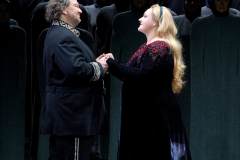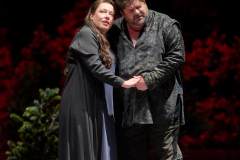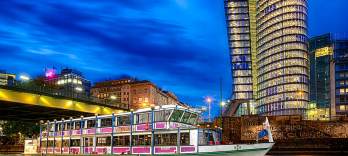Götterdämmerung
June 2025 | ||||||
|---|---|---|---|---|---|---|
Mo | Tu | We | Th | Fr | Sa | Su |
Synopsis
PRELUDE
Three Norns spin on the rope of fate, depicting the past, present and future:
Alberich's theft of the Rhinegold, the curse of the ring, Wotan's self-constitution through the cutting of his contractual spear from the world ash tree, its withering, its felling, Siegfried's meeting with Wotan. But the rope of fate breaks and the Norns flee down to their mother Erda.
Siegfried bids farewell to Brünnhilde at the Valkyrie Rock and is given protective runes by her; Siegfried leaves her the Ring of the Nibelung as a pledge of love.
ACT 1
Hagen, Alberich's son, advises his half-brother Gunther and his sister Gutrune to increase their fame:
Gunther should marry Brünnhilde and Gutrune Siegfried. When the latter comes to them, Gutrune, on Hagen's advice, gives him a potion that makes Siegfried suddenly forget Brünnhilde - he falls in love with Gutrune. In order to win her, he promises to fetch Brünnhilde from the Valkyries' Rock for Gunther.
After forming a blood brotherhood with Gunther, Siegfried hurries off to win Brünnhilde for Gunther. In the meantime, Brünnhilde is visited by her sister, the Valkyrie Waltraute. She begs her to return the ring to the Rhinemaidens in order to break the curse. However, Brünnhilde refuses the ring, as it is Siegfried's love pledge. Siegfried appears, transformed into the form of Gunther by his cloaked helmet, passes through the fire and conquers Brünnhilde. As a sign of her marriage - to Gunther - he takes the ring from her.
ACT 2
In a nocturnal scene, Alberich warns his son Hagen to win the ring for him.
When Brünnhilde, who arrives with Gunther, sees Siegfried and Gutrune as a couple and recognizes the ring on Siegfried's hand, she accuses him of betrayal. Siegfried denies his guilt. But Hagen, Gunther and Brünnhilde decide to kill him.
ACT 3
While hunting, Siegfried meets the Rhinemaidens, who ask him for the ring and warn him of the curse.
But the ring remains with Siegfried. The hunting party joins him and, at Hagen's request, Siegfried tells them about his past life. As he speaks, Hagen gives him a potion that restores his memory of Brünnhilde. Hagen uses it to obtain Siegfried's confession of betrayal and thrusts a spear into his back. Dying, Siegfried remembers his love for Brünnhilde. Hagen kills Gunther in the dispute over the ring, but Brünnhilde now reasserts her original right to Siegfried - and the ring:
She orders Siegfried to be burned and throws herself into the fire. The Rhine overflows its banks and floods the site of the fire, the three daughters of the Rhine drag Hagen, who wants to win the Ring for himself, into the depths and the Ring is returned to the Rhine. While Valhalla goes up in flames, the people witness the downfall of the race of gods with great emotion.
ACT 1 - 115 MIN
INTERMISSION - 25 MIN
ACT 2 - 80 MIN
INTERMISSION - 25 MIN
ACT 3 - 85 MIN
Program and cast
Siegfried: Andreas Schager
Gunther: Clemens Unterreiner
Hagen Falk Struckmann
Alberich: Jochen Schmeckenbecher
Brünnhilde: Anja Kampe
Gutrune: Regine Hangler
Waltraute: Szilvia Vörös
Conductor: Philippe Jordan
Director: Sven-Eric Bechtolf
Stage: Rolf Glittenberg
Costumes: Marianne Glittenberg
Vienna State Opera
Public Transport
Subway lines: U1, U2, U4
Trams: 1, 2, D, J, 62, 65
Buses: 59A
Local Railway: Badner Bahn
Stops: Karlsplatz / Opera
Taxi stands are available nearby.
Parking
Parking is only € 6, - for eight hours!
The Wiener Staatsoper and the ÖPARK Kärntner Ring Garage on Mahlerstraße 8, under the “Ringstraßengalerien”, offer the patrons of the Vienna State Opera a new, reduced parking fee. You can park in the Kärntner Ring Garage for up to 8 hours and pay only a flat fee of € 6, -. Just validate your ticket at one of the discount machines inside the Wiener Staatsoper. The normal rate will be charged for parking time greater than 8 hours. The validation machines can be found at the following coat checks: Operngasse, Herbert von Karajan-Platz, and the right and left and balcony galleries.
Important: In order to get the discount, please draw a ticket and do not use your credit card when entering the garage!
After devaluing your ticket in the Wiener Staatsoper you can pay comfortably by credit card or cash at the vending machines.
The machines accept coins and bills up to 50.- Euro. Parking time longer than 8 hours will be charged at the normal rate.
History
The structure of the opera house was planned by the Viennese architect August Sicard von Sicardsburg, while the inside was designed by interior decorator Eduard van der Nüll. It was also impacted by other major artists such as Moritz von Schwind, who painted the frescoes in the foyer, and the famous "Zauberflöten" (“Magic Flute”) series of frescoes on the veranda. Neither of the architects survived to see the opening of ‘their’ opera house: the sensitive van der Nüll committed suicide, and his friend Sicardsburg died of a stroke soon afterwards.
On May 25, 1869, the opera house solemnly opened with Mozart's Don Giovanni in the presence of Emperor Franz Joseph and Empress Elisabeth.
The popularity of the building grew under the artistic influence of the first directors: Franz von Dingelstedt, Johann Herbeck, Franz Jauner, and Wilhelm Jahn. The Vienna opera experienced its first high point under the direction of Gustav Mahler. He completely transformed the outdated performance system, increased the precision and timing of the performances, and also utilized the experience of other noteworthy artists, such as Alfred Roller, for the formation of new stage aesthetics.
The years 1938 to 1945 were a dark chapter in the history of the opera house. Under the Nazis, many members of the house were driven out, pursued, and killed, and many works were not allowed to be played.
On March 12, 1945, the opera house was devastated during a bombing, but on May 1, 1945, the “State Opera in the Volksoper” opened with a performance of Mozart's THE MARRIAGE OF FIGARO. On October 6, 1945, the hastily restored “Theaters an der Wien” reopened with Beethoven's FIDELIO. For the next ten years the Vienna State Opera operated in two venues while the true headquarters was being rebuilt at a great expense.
The Secretary of State for Public Works, Julius Raab, announced on May 24, 1945, that reconstruction of the Vienna State Opera would begin immediately. Only the main facade, the grand staircase, and the Schwind Foyer had been spared from the bombs. On November 5, 1955, the Vienna State Opera reopened with a new auditorium and modernized technology. Under the direction of Karl Böhm, Beethoven’s FIDELIO was brilliantly performed, and the opening ceremonies were broadcast by Austrian television. The whole world understood that life was beginning again for this country that had just regained its independence.
Today, the Vienna State Opera is considered one of the most important opera houses in the world; in particular, it is the house with the largest repertoire. It has been under the direction of Dominique Meyer since September 1, 2010.
Performances: Th 19 Dec 2024,
Performances: Tu 07 Jan 2025, 07:15
Performances: Th 01 Aug 2024,
Performances: Sa 05 Oct 2024,
Performances: Sa 12 Oct 2024,
Performances: Tu 18 Mar 2025, 07:15

 EN
EN DE
DE IT
IT FR
FR ES
ES RU
RU JP
JP RO
RO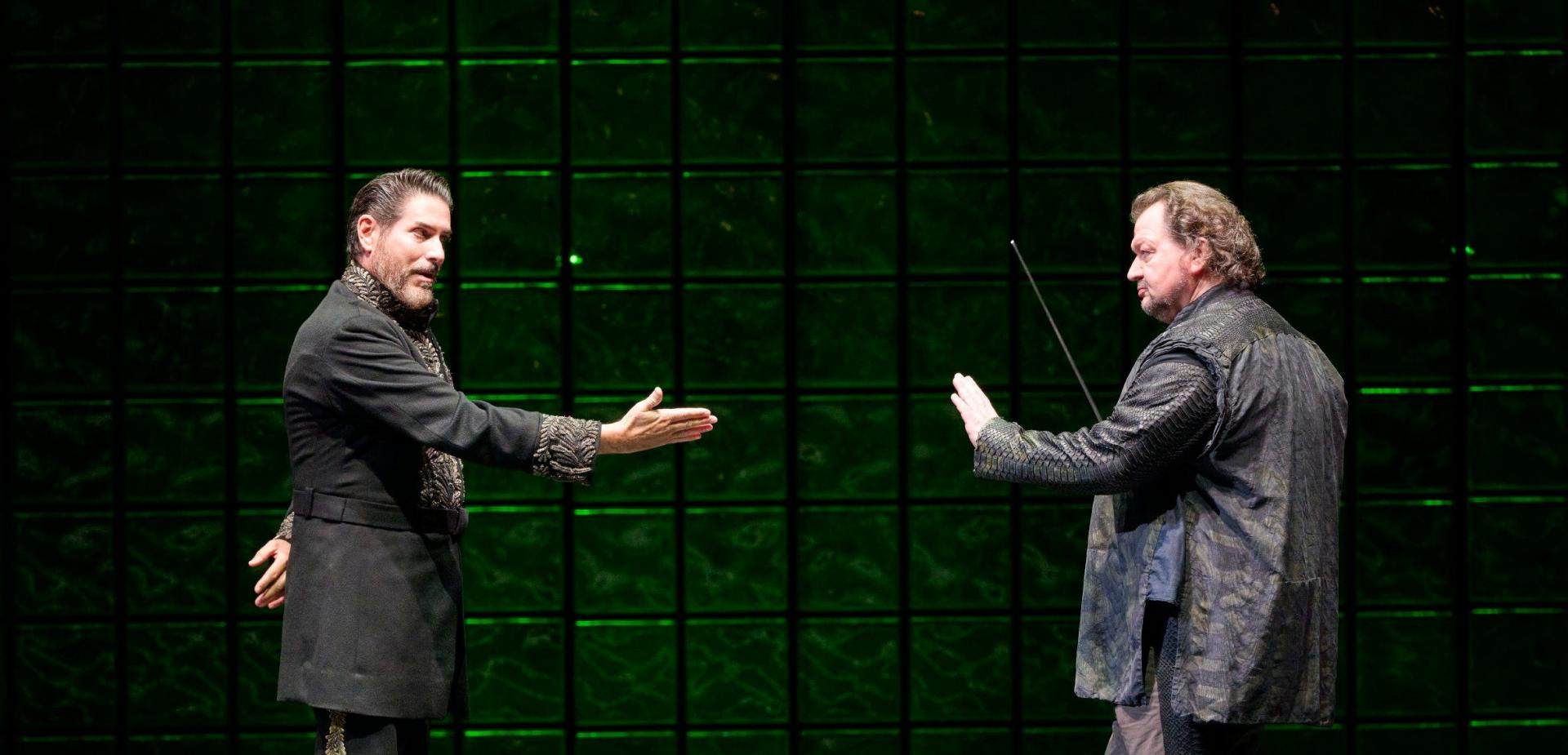
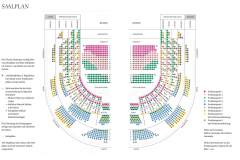 Seating plan
Seating plan 
